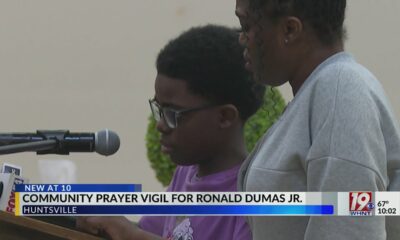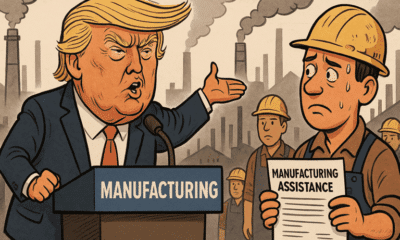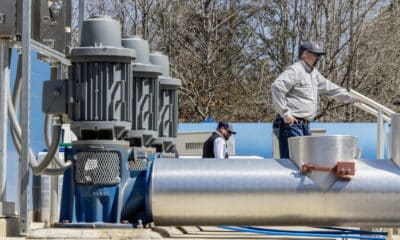
Hans Neleman/Stone via Getty Images
John Leverso, University of Cincinnati
Across the U.S., tough-on-crime policies are surging again, despite research showing they do little to reduce crime, particularly violent offenses.
Before the early 1990s, people who were sentenced to 10 years in prison might be released after serving roughly half that long. That’s because of policies that allowed incarcerated individuals to earn credit for good behavior or, in some states, to avoid losing credits they already held toward an early release. These so-called “good time” policies were created by states to encourage good behavior and rehabilitation and to reduce prison overcrowding.
But in the 1990s, when national politics was focused on crime rates, Congress encouraged states to adopt so-called “truth-in-sentencing” laws, which required people to serve at least 85% of their prison sentence.
As research highlighted the inefficacy and unintended consequences of these laws, states rolled them back or modified them, mostly by partially repealing them or reducing the severity of mandatory sentences.
Some efforts to roll back harsh sentencing rules continue: In Illinois, traditionally a leader in criminal justice reform, one bill that would soften truth-in-sentencing requirements has stalled, though another was introduced in January 2025.
But in many other states, truth-in-sentencing laws and other similar laws that impose longer sentences are making a comeback, particularly for violent crimes.
Since 2023, Louisiana, Arkansas, South Dakota and Tennessee have passed truth-in-sentencing laws. North Dakota is now considering similar legislation. In November 2024, Colorado voters required people convicted of violent crimes to serve higher percentages of their sentences, which is a similar move, though it didn’t bear the “truth-in-sentencing” label.
A personal lens on the topic
These laws have real effects on real people.
In 1998, I was sentenced to 22 years in the Illinois Department of Corrections for a gang-related violent crime I committed as a juvenile. I served just 11 of those years under a long-standing policy that allowed individuals to serve half their sentence with good behavior.
But if I had been arrested just 100 days later, a truth-in-sentencing law would have taken effect, and I would have had to serve the full 22 years.
Eleven years is a long time. Since my release in 2012, I’ve earned a bachelor’s degree, a master’s degree and a Ph.D. I’m now a college professor, author, husband and father.
If I had been required to serve my full sentence, I would have been released in 2023, older and with fewer opportunities for education, rehabilitation and rebuilding my life.
Instead of being able to start my education at the age of 30, I would have entered the world in my forties, making it much harder to pursue a decade of schooling to become a professor. The delay would have also made it harder to start a family, forcing me to balance career-building with the difficulties of having children later in life.

AP Photo/Jae C. Hong
Not deterring crime
Supporters of truth-in-sentencing laws say they are intended to increase accountability for wrongdoing and deter crime. The logic can seem reasonably intuitive: If people know they will receive a harsher punishment, they will be less likely to commit particular crimes.
But research finds that those are not the results. There is no compelling evidence that punitive sentencing policies discourage individuals from engaging in criminal activity.
And states without truth-in-sentencing laws have seen their crime rates fall to roughly the same degree as states that have the laws.
Harming society at large
Research also finds that truth-in-sentencing laws cause far-reaching harms to people convicted of crimes and to society at large, undermining both rehabilitation and public safety.
Because truth-in-sentencing laws focus on deterrence, they do not address the causes of criminal behavior, such as poverty and childhood trauma.
These laws also make prisons less safe: They remove incentives for people in prison to follow the rules, get an education, participate in psychotherapy or otherwise engage in positive activities while behind bars.
The vast majority of incarcerated people – six out of every seven inmates – are released into society again. Under truth-in-sentencing laws, they emerge from prison less prepared to follow the laws than they would have been if they had access to educational programs, therapy and an incentive structure that encouraged rehabilitation while incarcerated.
A study in Georgia, for instance, found that after stricter sentencing requirements were enacted, inmates subject to the new rules committed more disciplinary infractions and participated in fewer rehabilitation programs in prison. And once released, they were more likely to commit new crimes than released inmates who had not been subject to the stricter sentences.
Costing taxpayers dearly
Additionally, the financial burden of these laws is significant.
For example, Arkansas’ truth-in-sentencing law, passed in 2023, is projected to cost the state’s taxpayers at least US$160 million over the next decade to pay for increased prison capacity and staffing.
Instead of deterring crime, truth-in-sentencing laws lock more people up for longer periods of time without addressing the underlying factors, which strains already overburdened correctional systems.
These laws also disproportionately affect people of color, exacerbating systemic inequities in the criminal justice system.

AP Photo/Eric Risberg
A different path
For me, the possibility of earning good-time credit was a powerful motivator to engage in rehabilitative activities and regain lost time after disciplinary infractions.
When I began my sentence, Illinois law allowed people to receive a 50% reduction in their sentence through good-time credit: I might need to serve only half of my original 22-year sentence, and be released after 11 years, if I maintained good behavior.
Breaking the rules would cost credit, extending my time in prison beyond that 50% mark. Early in my sentence, I broke the rules and was placed in isolation – also called segregation or restrictive housing, in a cell for 24 hours a day, except for six hours of exercise a week – for a total of 18 months, resulting in a significant loss of my good-time credit. As a result, instead of serving 11 years, my expected time in prison increased to approximately 12.5 years.
This setback was a turning point. I knew that my actions had directly affected the length of time I would have to spend in prison. I became determined to earn back my lost time. I focused on staying out of trouble, earning my GED, completing my associate degree and enrolling in available programs. I was able to regain my time credit and had to serve only 11 years.
Under today’s truth-in-sentencing laws, none of this would have been possible. I would have been required to serve my full sentence, regardless of whether I chose to change, rehabilitate or prepare for life after prison. The ability to reduce my sentence through good behavior and educational achievement gave me a tangible incentive to turn my life around, an opportunity that truth-in-sentencing laws eliminate.
A way forward
By contrast, investing in rehabilitation not only improves outcomes for those incarcerated but also makes communities safer by reducing the cycle of crime.
Research shows that in-prison rehabilitation programs – particularly those centered on education and vocational training programs and social-support services such as housing help, mental health care and job placement assistance – reduce recidivism rates. While in prison, people are held accountable while also having opportunities to grow and learn, preparing for successful reintegration into society after their release.
I believe that in the overwhelming majority of people in prison, there is potential for redemption – but that potential is most likely to emerge when they have opportunities to learn and grow and receive benefits for making changes in their lives.
Unfortunately, many states are choosing to spend millions locking up more people for longer periods – while giving them less opportunity to improve themselves and their lives, reducing their potential for change and safe, productive reintegration into society upon release.![]()
John Leverso, Assistant Professor of Criminal Justice, University of Cincinnati
This article is republished from The Conversation under a Creative Commons license. Read the original article.


























































